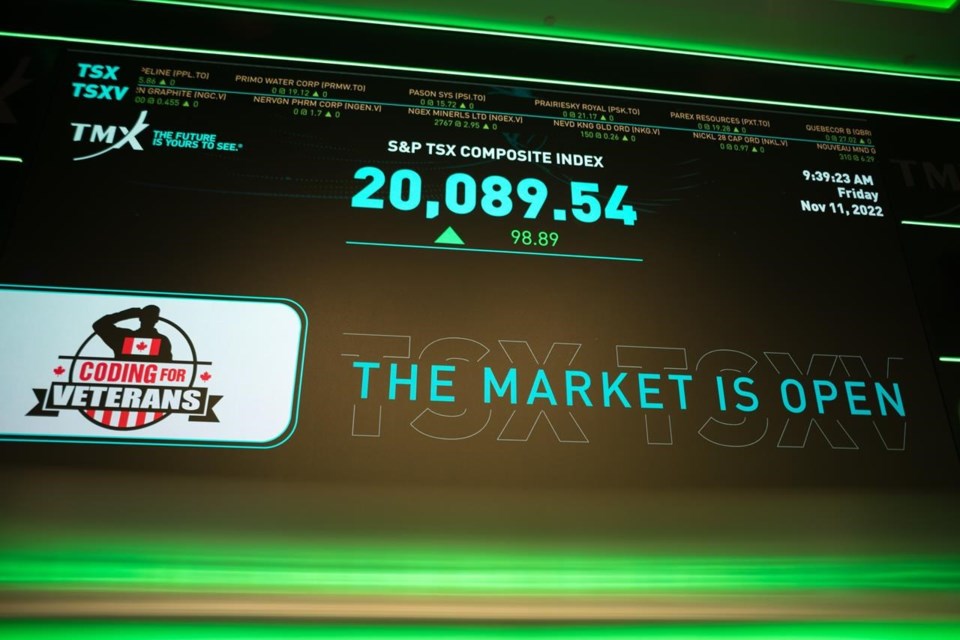TORONTO — Strength in industrial stocks helped Canada's main stock index post a small gain Thursday, while U.S. markets rose, more than reclaiming Wednesday's losses.
The S&P/TSX composite index closed up 61.71 points at 20,756.73.
In New York, the Dow Jones industrial average was up 201.94 points at 37,468.61. The S&P 500 index was up 41.73 points at 4,780.94, while the Nasdaq composite was up 200.03 points at 15,055.65.
The Nasdaq led gains in the U.S., with Apple’s share price rising 3.3 per cent and other Big Tech stocks also higher.
This week, investors have been reacting to recent U.S. data that paints a picture of continued strength in the economy as 2023 came to a close, said Tamsin Wilding, principal and portfolio manager for fixed income at Leith Wheeler Investment Counsel Ltd.
U.S. retail sales accelerated in December, against economists’ expectations. Inflation also gained in December at 3.4 per cent year-over-year compared with 3.1 per cent in November.
Bond yields have been on the rise over the past week, which puts pressure on equities — but today, markets appear to be taking a bit of a breather as they take stock of the economy’s strength, said Wilding.
“My guess ... would be that some of the economic good news is starting to filter through even though yields are rising," she said.
On Thursday, a decline in the number of U.S. workers applying for unemployment benefits underscored the continued resilience of the economy, said Wilding.
The U.S. Federal Reserve has signalled it expects to cut rates three times this year, and for a while investors were expecting double that, with the first cut as early as March, said Wilding. But those bets have been slowly pared back over the past week, she said.
Traders’ bets for a March cut, for example, have been tempered to around 56 per cent, down from more than 70 per cent a week ago, according to data from CME Group.
The lingering question in 2024 for both Canada and the U.S. is when rate cuts will start, and how deep they will go, said Wilding.
Canada is in a similar situation when it comes to its inflation data, which also threatens to be stickier than hoped, she said — the Consumer Price Index rose 3.4 per cent year-over-year in December, ticking higher from 3.1 per cent in November.
But by other metrics, like GDP, the Canadian economy has softened much faster under the weight of rate hikes than the U.S. economy has.
Nevertheless, Wilding thinks the Bank of Canada will likely keep pace with the Fed when it comes to cuts, “especially early on in the cycle.”
The Canadian dollar traded for 74.05 cents US compared with 73.95 cents US on Wednesday.
The March crude oil contract was up US$1.47 at US$73.95 per barrel and the February natural gas contract was down 17 cents at US$2.70 per mmBTU.
The February gold contract was up US$15.10 at US$2,021.60 an ounceand the March copper contract was up one cent at US$3.75 a pound.
— With files from The Associated Press
This report by The Canadian Press was first published Jan. 18, 2024.
Companies in this story: (TSX:GSPTSE, TSX:CADUSD)
Rosa Saba, The Canadian Press



